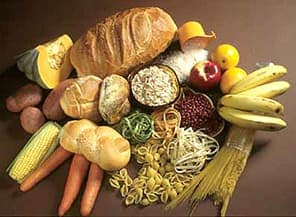This post in our ingredient series focuses on carbohydrates and understanding food labels. In this post, I wanted to give you all an overview of carbohydrates, what they are and why they are an important part of our body and everyday life.
 Carbohydrates are found in most foods. The body takes in carbohydrates from what we eat and then breaks most of them down into simple sugars, which are a major source of the body’s energy. There are two main ways to group carbohydrates found in foods: simple and complex.
Carbohydrates are found in most foods. The body takes in carbohydrates from what we eat and then breaks most of them down into simple sugars, which are a major source of the body’s energy. There are two main ways to group carbohydrates found in foods: simple and complex.
Simple Carbohydrates
Simple carbohydrates are also known as simple sugars. Your body gets simple sugars in processed sugar, such as the sugar in candy.
However, simple sugars are not just found in sugary treats – they also exist in many nutritious foods! Fruits and milk both contain simple sugars, and also provide your body with vitamins and other important nutrients.
Simple sugars are often processed by the body quickly. This is why complex carbohydrates are so important.
Complex Carbohydrates
Complex carbohydrates include starches and fiber. Fruits and vegetables contain starch and fiber. Grains, such as bread, crackers, pasta, and rice, all contain starches too. Much like simple carbohydrates, complex carbohydrates can exist in different forms, such as refined grains and unrefined grains.
Refined grains are processed, which removes much of their nutrients and fiber. Some examples of refined grains include white rice or white bread.
Unrefined grains, such as brown rice or whole grain bread, are not processed and still have plenty of vitamins, minerals and fiber. Fiber is not only important because it fills you up and doesn’t leave you hungry, but it also helps to support your digestive system.
The body digests and absorbs starches more slowly than simple carbohydrates. This can provide a more sustained source of energy over a longer period of time.
Now that we know the basics of carbohydrates, look out for Christine’s blog next week when she will continue this topic to discuss the carbs found in Neocate!
–






